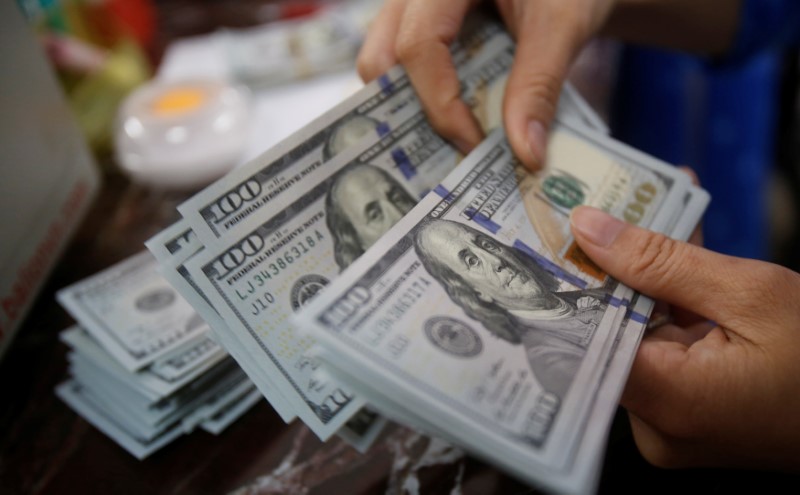By Peter Nurse
Investing.com - The dollar edged lower in early European trade Friday, with volumes hit by the U.S. holiday and traders weighing the conflicting influences of positive economic data and the increasing number of coronavirus cases.
At 2:50 AM ET (0650 GMT), the dollar index, which tracks the greenback against a basket of six other currencies, was down 0.1% at 97.203.
EUR/USD was flat at 1.1240, GBP/USD rose 0.1% to 1.2477, while USD/JPY was flat at 107.50.
Economic data released earlier Friday pointed to a brisk pickup in the Chinese service sector, with the Caixin Services Purchasing Managers Index coming in at 58.4 in June, the highest reading in two months. This helped USD/CNY drop 0.1% to 7.0606.
With the U.S. recording Thursday an addition of 4.8 million jobs in June and manufacturing activity rebounding more than expected, the economic signs suggest that the vast sums of money injected by the monetary and fiscal authorities around the world are bearing fruit.
“Fed money printing has now secured what seems to be a stable negative correlation between risk assets and the dollar,” said analysts at ING, in a research note.
“As long as the Fed is still buying assets and prepared to do more, we expect this negative correlation, Risk On, Dollar Off, to dominate financial markets over the coming quarters. Economies slowly getting back on their feet should mean a backdrop of a benign dollar bear trend in the second half of the year.”
Even so, another spike in coronavirus infections threatens to put the brakes on economic activity once again.
The U.S. recorded more than 52,000 new cases on Thursday, just under its daily record, with Florida alone accounting for over 10,000 of them. The U.S. accounts for around a quarter of the 10.8 million coronavirus cases recorded worldwide.
More than three dozen U.S. states have seen increases in Covid-19 cases as of Thursday, prompting them to delay and in some cases reverse plans to let stores reopen and activities resume.
Elsewhere, USD/INR traded 0.2% higher at 74.872, with the rupee just coming off its highest level in more than three months. The Indian currency has gained almost 1% against the dollar this week alone, helped by strong inflows amid expectations that the central bank may be slowing its dollar purchases.
The Fed's balance shrunk for a second week in a row last week as the volume of cross-currency swaps with other central banks, a feature of the early stage of the Covid crisis, was wound down further.
